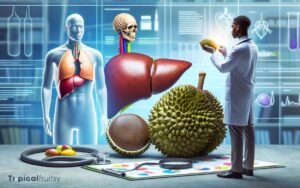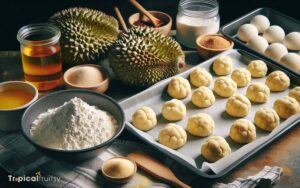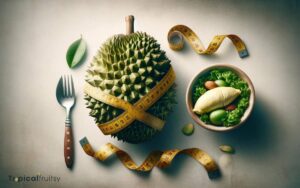Is Durian High in Histamine? What You Need to Know!
No, durian is not considered high in histamine. However, individuals with histamine intolerance should consume it with caution as the fruit can trigger symptoms in sensitive persons.
Histamine levels in foods can vary widely. Durian has not been identified as a significant source of histamine, but this does not mean it’s entirely free of it.
Histamines are more commonly found in aged and fermented foods, and durian is neither.
However, because histamine sensitivity can differ from person to person, those with histamine intolerance might react differently to durian. It is always best to consult with a healthcare provider for personalized advice.
Durian may not be histamine-rich, but individual tolerance can vary, necessitating caution for those with sensitivities.

Key Takeaway
High vs. Low Histamine Food List Including Durian
| Food Category | Examples of High Histamine Foods | Examples of Low Histamine Foods |
|---|---|---|
| Dairy | Aged cheeses | Fresh milk, cream |
| Meats | Cured meats, sausages | Freshly cooked meat, poultry |
| Seafood | Smoked fish, shellfish | Fresh fish |
| Fruits | Avocados, bananas, tomatoes | Apples, pears, durian |
| Vegetables | Spinach, eggplant | Lettuce, zucchini, bell peppers |
| Fermented Foods | Sauerkraut, soy sauce | Fermented foods made without histamine (e.g., fresh kimchi, homemade yogurt) |
| Beverages | Alcohol, especially red wine | Herbal teas, water |
Understanding Histamines

Histamines are biogenic amines that play a critical role in the body’s immune response, acting within the physiological context as mediators of inflammatory processes.
These organic nitrogenous compounds are synthesized by the decarboxylation of the amino acid histidine and are stored primarily in the mast cells and basophils.
Upon allergenic stimulus or other immunological trigger, histamines are released and contribute to a cascade of reactions including vasodilation, increased vascular permeability, and smooth muscle contraction.
This physiological mechanism is essential for the protection against pathogens, but excessive or uncontrolled histamine release can lead to symptoms such as itching, hives, and in severe cases, anaphylaxis.
With this foundational understanding of histamines, we can now transition to the concept of histamine intolerance and its implications for individuals sensitive to dietary histamines, such as those found in durian.
Histamine Intolerance Explained

Many individuals experience histamine intolerance, a condition characterized by the body’s inability to effectively metabolize and eliminate an excess of this compound, which can exacerbate symptoms upon consuming histamine-rich foods such as durian.
This intolerance typically arises when the enzyme diamine oxidase (DAO), responsible for breaking down ingested histamine, is deficient or inhibited.
Consequently, histamine accumulates in the body, potentially causing a range of adverse reactions, including headaches, gastrointestinal distress, hives, and a runny nose.
Such symptoms are often mistaken for allergic responses, yet they do not involve the immune system.
The condition’s complexity necessitates a detailed approach to diagnosis and management, with dietary modifications often recommended to reduce histamine intake and alleviate discomfort.
Durian Nutritional Profile
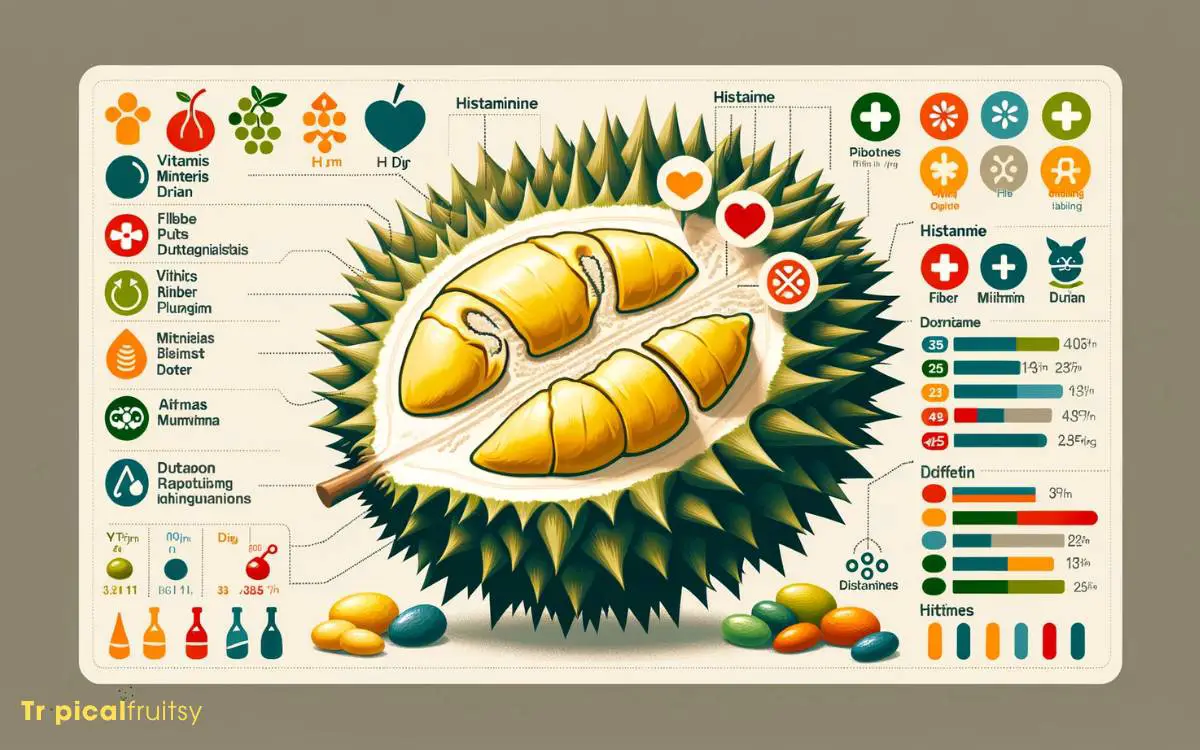
Regarding the nutritional profile of durian, it is a unique tropical fruit that provides a rich array of vitamins, minerals, and dietary fiber, yet its histamine content is of particular interest to individuals with histamine intolerance.
This ‘king of fruits’ harbors significant nutritional value that warrants a closer examination:
- Vitamin C: Durian is an excellent source of vitamin C, which is vital for immune function and skin health.
- B Vitamins: It contains a variety of B vitamins, including B1, B2, B3, B5, and B6, which support energy metabolism and brain function.
- Potassium: High in potassium, durian helps regulate fluid balance and muscle contractions.
- Dietary Fiber: Durian is rich in fiber, promoting digestive health and potentially aiding in cholesterol management.
This nutritional profile contributes to durian’s potential health benefits, while its histamine levels remain an important consideration for sensitive individuals.
Histamine Content in Foods
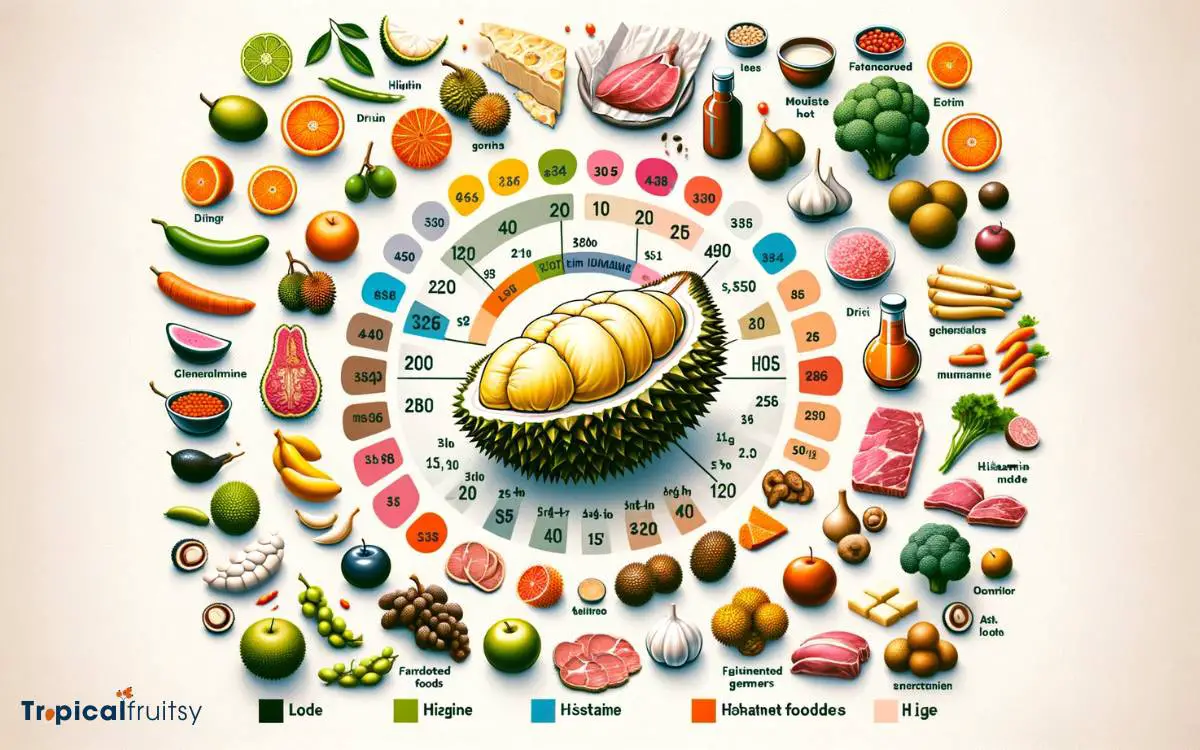
Histamine, a biogenic amine, naturally occurs in various foods and can elicit physiological responses when ingested in significant quantities.
Certain foods are known to be high in histamine, including aged cheeses, fermented products, and some fruits, which may pose a concern for individuals with histamine intolerance or sensitivities.
Adhering to a low-histamine diet has been shown to alleviate symptoms for those affected, making the identification of high histamine foods a critical step in dietary management.
Histamine-Rich Food Types
Certain foods, such as aged cheeses, cured meats, and fermented products, are known to have high levels of histamine. These dietary items can trigger symptoms in individuals with histamine intolerance or other related conditions.
Histamine is a biogenic amine that occurs naturally in various foods, especially those that undergo microbial fermentation or have a longer maturation process.
Excessive intake of histamine-rich foods can lead to adverse effects like headaches, rashes, or gastrointestinal disturbances in sensitive individuals.
- Aged Cheeses: – Parmesan – Gouda – Cheddar
- Cured Meats: – Salami – Pepperoni – Prosciutto
- Fermented Products: – Sauerkraut – Kimchi – Soy Sauce
- Alcoholic Beverages: – Red Wine – Beer – Champagne
Understanding the histamine content in these foods is crucial for managing dietary choices and mitigating potential histamine-related health issues.
Low-Histamine Diet Benefits
In light of the potential adverse reactions to histamine-rich foods, adopting a low-histamine diet can significantly alleviate symptoms for those with histamine intolerance or sensitivity.
This dietary adjustment is associated with a reduction in occurrences of headaches, skin irritations, gastrointestinal disturbances, and respiratory issues, which are symptomatic of histamine overload.
The consumption of foods with lower histamine content helps maintain a balance within the body’s histamine levels, leading to improved overall well-being.
Research indicates that the benefits extend to enhanced digestive function and possibly a lessening of anxiety-like symptoms.
Consequently, individuals who are mindful of their histamine intake often report an increase in quality of life, affirming the therapeutic value of a low-histamine diet.
Identifying High Histamine Foods
A person’s ability to tolerate high histamine foods can vary, but it is crucial to identify such items, as they can exacerbate symptoms for those with histamine sensitivities.
Foods with high histamine levels are typically aged, fermented, or processed, as these methods can lead to increased histamine production or release.
Identification relies on comprehensive food lists backed by scientific research, allowing individuals to manage their diets effectively.
- Aged cheeses: Longer aging processes lead to higher histamine concentrations.
- Fermented foods: Products like sauerkraut, kimchi, and soy sauce are known for their elevated histamine content.
- Processed meats: Salami, pepperoni, and other cured meats often contain significant histamine levels.
- Alcohol: Especially red wine and beer, which can trigger histamine release and contain histamines themselves.
Durian and Histamine Levels
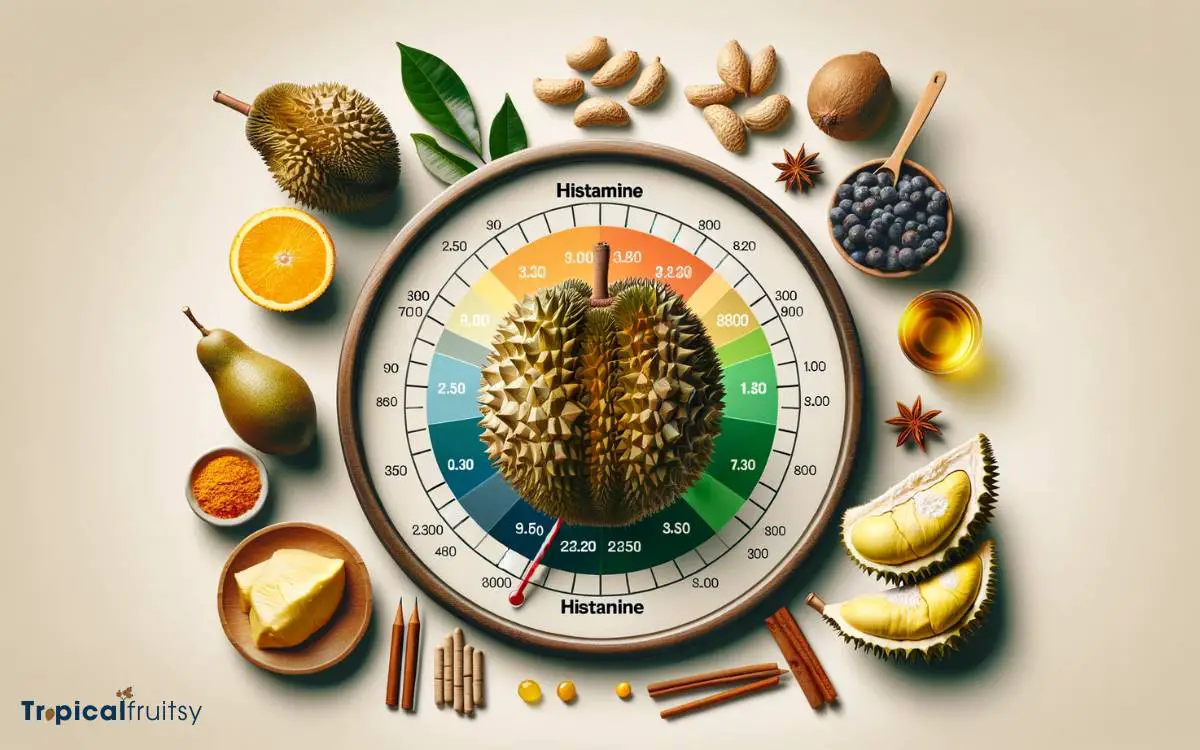
While research on the histamine content of durian fruit is limited, preliminary studies suggest that durian may contain varying levels of histamine.
This could be relevant for individuals with histamine intolerance or those who are sensitive to histamine-rich foods.
Given the complexity of measuring histamine levels in foods, data on durian’s histamine content should be approached with caution.
| Factor | Impact on Histamine Level | Consideration |
|---|---|---|
| Ripeness | May increase with ripening | Select less ripe durians |
| Storage | Prolonged storage can elevate levels | Consume fresh to minimize histamine |
| Preparation | Fermentation can raise histamine | Avoid fermented durian products |
| Individual Sensitivity | Varies from person to person | Monitor personal reactions |
| Food Combinations | Other foods may affect overall histamine intake | Be mindful of dietary context |
Evidence-based analysis of durian’s histamine content requires a nuanced understanding of these variables and their interactions.
Further research is essential to provide concrete guidance for consumers regarding durian consumption and histamine-related health concerns.
Managing Histamine Intake

Effective management of histamine intake begins with the identification of foods known to have high levels of histamine, such as certain aged cheeses, processed meats, and potentially durian.
Adhering to a low-histamine diet can offer significant benefits to individuals with histamine intolerance, by mitigating symptoms like headaches, hives, or gastrointestinal distress.
Recognizing the manifestations of histamine intolerance is crucial for dietary adjustments and should be informed by clinical evidence and dietary analysis.
Identify High-Histamine Foods
Identification of high-histamine foods is essential for individuals seeking to manage their dietary histamine intake and mitigate potential adverse reactions.
Histamine is a biogenic amine that can accumulate in certain foods, particularly those that are aged, fermented, or have undergone bacterial activity.
High levels of histamine intake can lead to symptoms like headaches, hives, or digestive issues in sensitive individuals.
Here is a concise list of foods known for their higher histamine levels:
- Aged cheeses
- Processed meats (e.g., salami, pepperoni)
- Fermented foods (e.g., sauerkraut, kimchi, soy sauce)
- Alcoholic beverages, particularly red wine and beer
Understanding and moderating consumption of such foods can be a critical step for those with histamine intolerance or related sensitivities.
Low-Histamine Diet Benefits
Adopting a low-histamine diet can significantly alleviate the discomfort associated with histamine intolerance by reducing the incidence of symptoms such as migraines, gastrointestinal distress, and skin irritation.
Individuals with histamine intolerance experience an accumulation of histamine due to an imbalance between histamine intake and degradation.
Histamine is a biogenic amine, implicated in various physiological functions but can provoke adverse reactions when not adequately metabolized.
A diet low in histamine helps maintain a balance by minimizing the histamine load from external sources.
This dietary approach is supported by clinical observations and patient reports, which consistently document symptom improvement when high-histamine foods are restricted. Benefits extend to enhanced quality of life and potentially reduced reliance on medications.
Hence, for those with histamine intolerance, dietary management is a cornerstone of symptom control.
Histamine Intolerance Symptoms
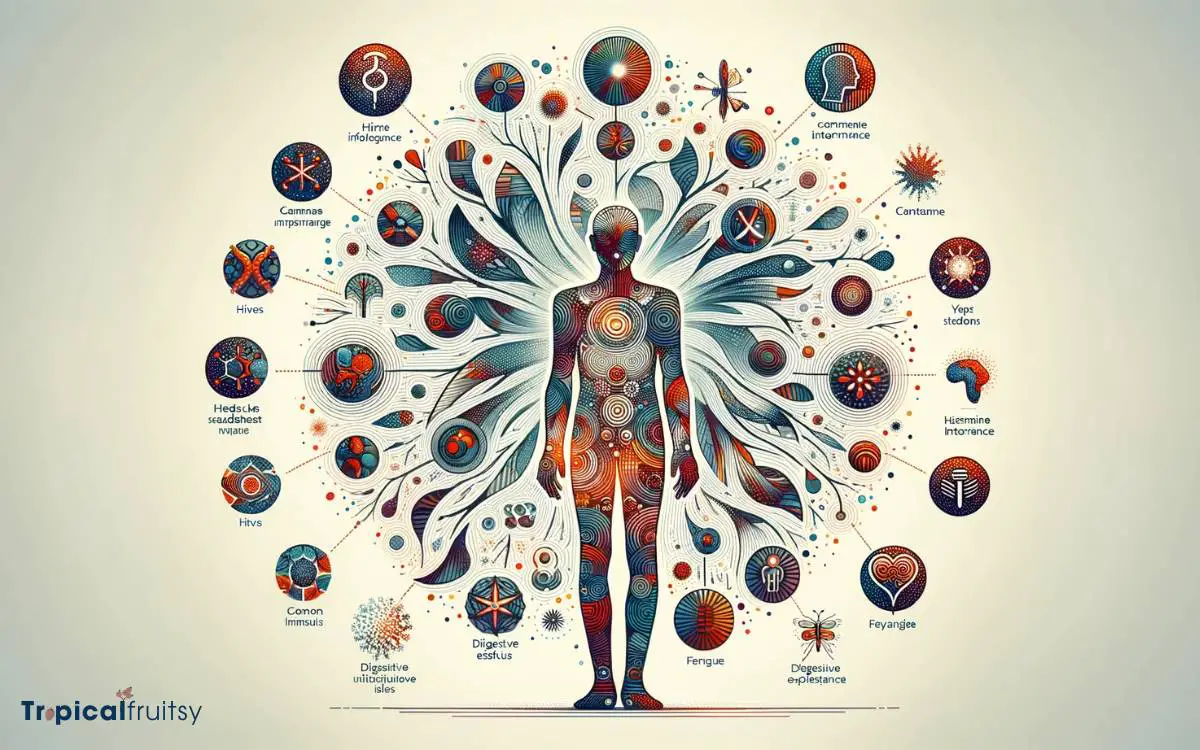
Symptoms of histamine intolerance can range from mild to severe and include headaches, digestive issues, and skin rashes, necessitating careful management of dietary histamine intake.
Individuals with histamine intolerance may experience a constellation of symptoms that often complicate diagnosis.
However, understanding and recognizing these manifestations can guide dietary adjustments and improve quality of life.
- Headaches or migraines: Often triggered by histamine-rich foods, these can be debilitating.
- Digestive disturbances: Including bloating, gas, diarrhea, and constipation.
- Skin issues: Such as hives, eczema, or flushing.
- Respiratory problems: Including nasal congestion, sneezing, and asthma-like symptoms.
These symptoms are due to the body’s inability to break down histamine efficiently, leading to an accumulation that can affect various organ systems. Managing intake through diet and lifestyle can alleviate the burden of these symptoms.
Conclusion
While durian’s exact histamine content requires more empirical investigation, current evidence does not categorically classify it as high-histamine food.
Individuals with histamine intolerance should adopt a cautious approach when incorporating durian into their diet, monitoring symptoms and seeking professional advice.
The broader context of dietary histamine management remains essential, and further research could illuminate the specific role of durian within this paradigm.
Could durian be a tropical delight that is more inclusive than previously thought?




